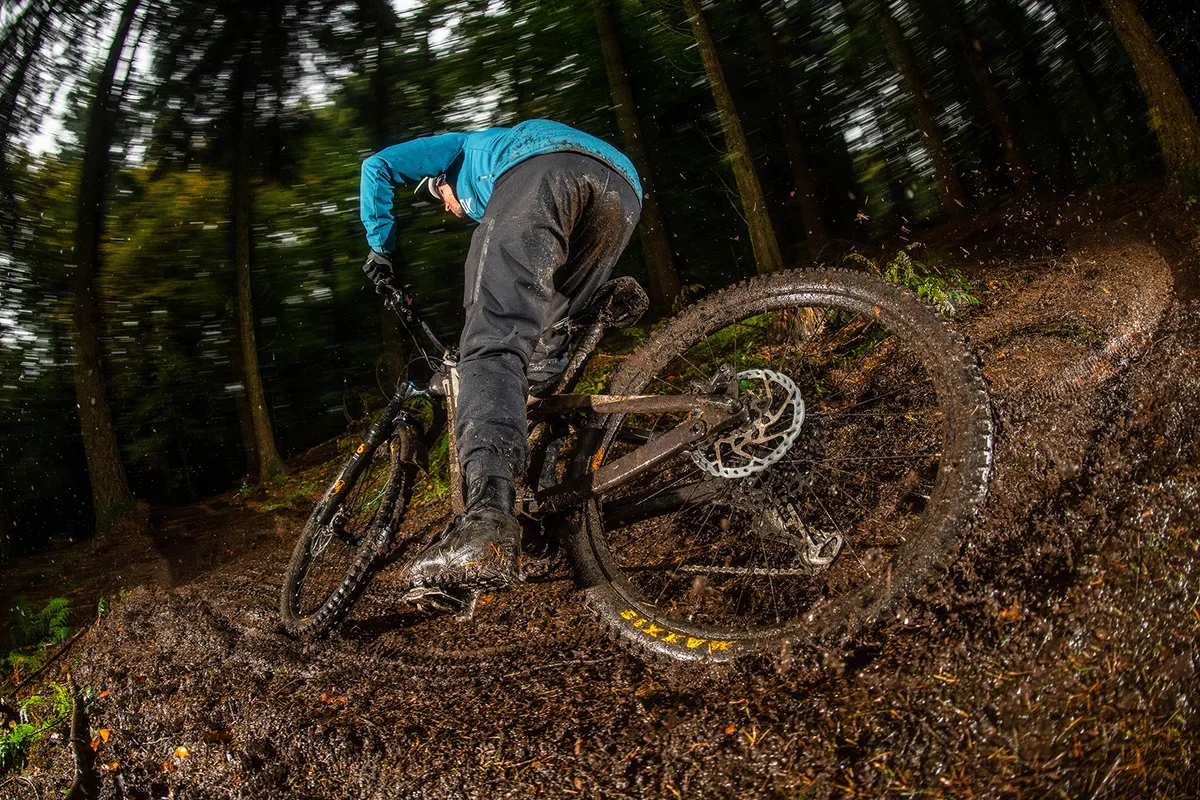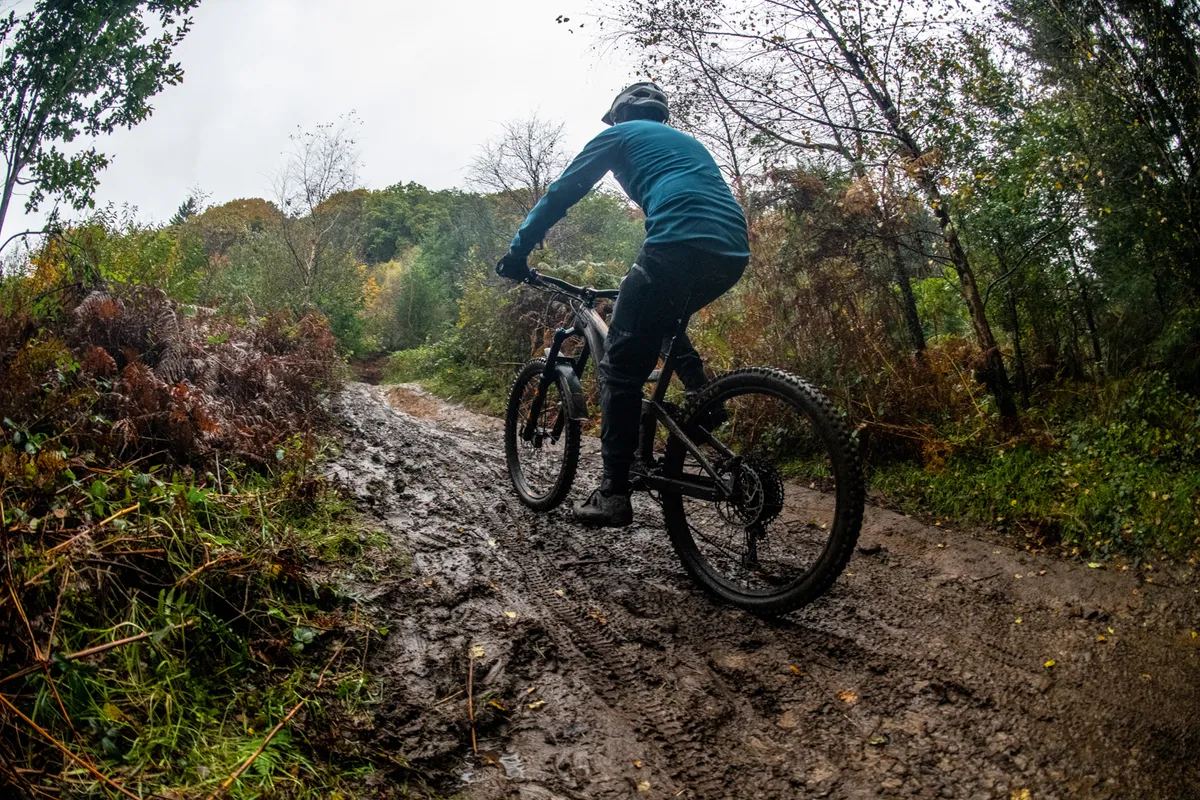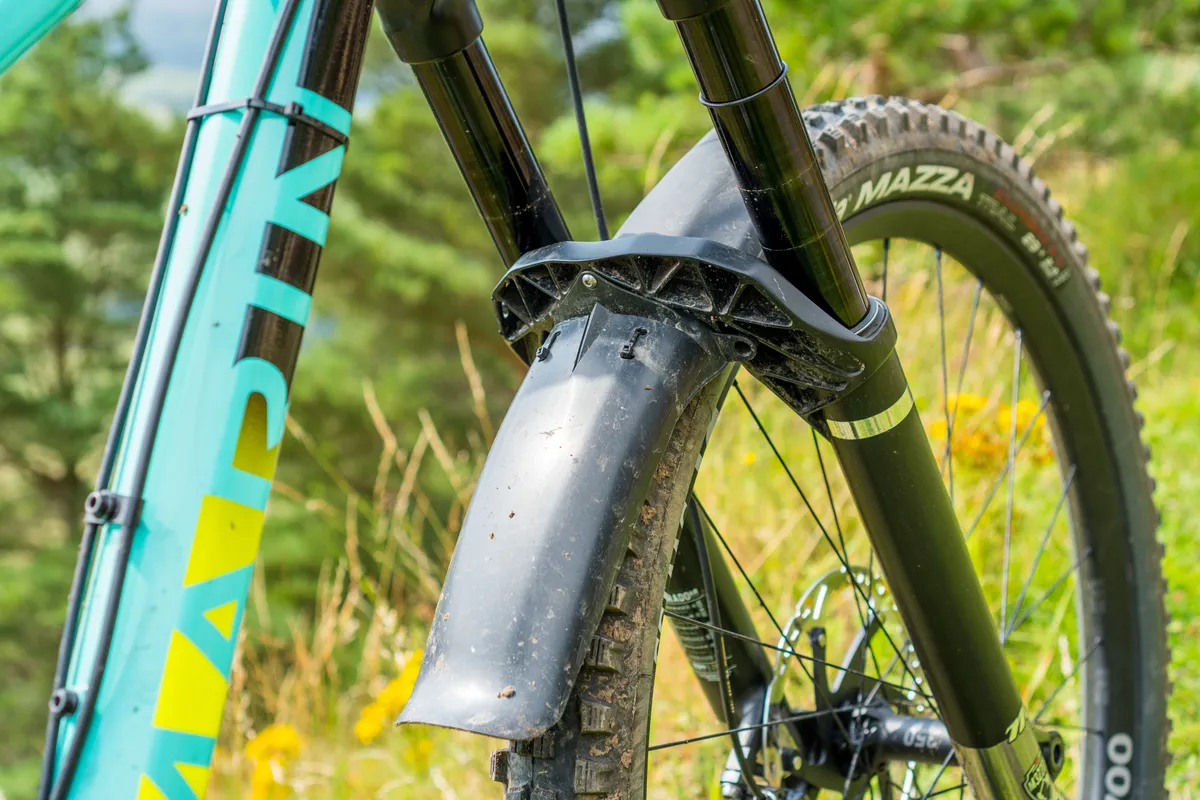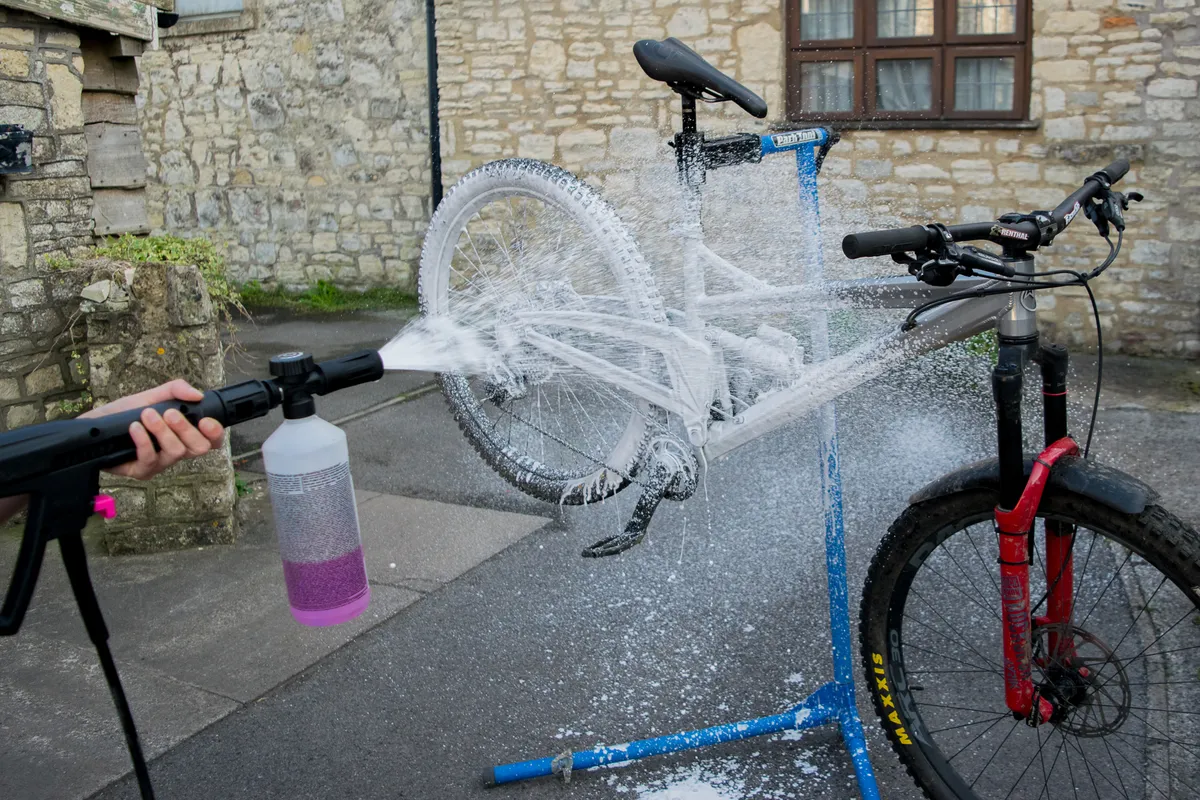Rain, rain, rain. Some love it, some hate it, but however you feel about muddy ground, learning to ride it well will boost your bike handling skills and help you have more fun out on the trails.
Getting your bike set up for slippery, muddy, wet conditions will give you a head start, and we spoke to top mechanic Joe Krejbich to get his top recommendations for making your mountain bike ready for the wet.
As Rachel Atherton's former mechanic, Krejbich helps to ensure his riders' bike have the optimum setup for all the terrain and conditions faced throughout the year, from dry and dusty to sloppy and wet.
While most of us are guilty of just getting on our bikes and pedalling, riders and mechanics at World Cup-level will often tune suspension and tyre pressure between each run, let alone from one course to the next.
We might not go that far for our weekend rides, but setting your bike up to suit the conditions will give you better traction and handling in the mud, and it's not difficult to do.
Give your bike a pre-ride check
Before you do anything else take a few minutes to ensure that your bike is in good nick, safe and ready to ride. The last thing you want to be doing on a mucky wet trail is fiddling with bolts or risking losing something essential in a muddy puddle, miles from the end of your ride.
Krejbich suggests a quick and simple bike check. "Check the axles and bolts are tight, and ensure the spokes aren't loose and that the wheels are true," he says.
Drop your tyre pressure

Tyre pressure is always important, but particularly when grip is at a premium.
"Generally, people drop two or three PSI," says Krejbich. "A lower tyre pressure allows it to get more grip. Yes, you sacrifice quite a bit of rolling speed, but if the ground is boggy and wet anyway then grip is what you want."
If you're carrying a pump with you, you can adjust your tyre pressure on the trail to work out what's best for the conditions you're riding. A pressure gauge will also help you to accurately dial-in your pressure.
Likewise, if you're racing, take time during practice runs to adjust the pressure to give you the optimum pay-off between rolling resistance and traction.
Consider swapping tyres

Most mountain bikes come specced with decent tyres these days, and there are plenty of good all-round tyres that provide traction in mildly muddy conditions without having to go for a full-on mud tyre.
For days when it's wet but not raining hard, these will often do, though see point 2 on dropping your tyre pressure.
However, if it's a full-on mud fest and the trail more closely resembles chocolate mousse or slurry, then a winter mountain bike tyre will help you get traction and minimise those skids, slides and crashes.
Adjust your suspension
So many riders are guilty of setting their suspension up once and leaving it, or only checking it a couple of times a year. But there are many factors that will affect how well your suspension performs, including how much weight you are carrying, the conditions and even the temperature.
First things first, double-check you've got the right pressure to start with — our guide on how to set up your suspension will give you a hand here — then tweak it to suit the conditions.
"If you run the front end too soft and you hit a boggy hole, your front wheel will dive and you'll go over the bars," says Krejbich, who recommends firming up the front suspension a little to compensate. "That'll stop the forks from diving," he explains.
The shock can also be adjusted to make riding slick and steep sections more manageable. "You may want to go softer on the back as that helps with traction. It also helps with steeper sections as the bike will sit in the suspension a bit more and you won't be pitched too far over the front."
Add mudguards

We're popping this one on the list for two reasons. Firstly, riding with a face-full of mud isn't going to help your bike handling; it's hard to steer if your goggles are covered in crud and you can't see the trail. Yes, tear-offs can help but why not minimise the flying mud in the first place?
Secondly, if you're planning on riding for any length of time, mountain bike mudguards will help reduce the amount of gloopy, gritty stuff that makes its way down the back of your jacket and shorts.
There are so many options to choose from nowadays, no matter what tyre width or suspension set up you have, and at a huge range of prices. So really there's no excuse... unless you actually like grit in your eyes?
Or you could try making your own DIY mud flap.

Last but not least — don't forget to clean your bike!
Riding in mud can be great, but the damage it can do to your pride and joy ain't funny. Grit gets into the moving parts and grinds them away, so cleaning your bike regularly, and especially after muddy rides, is crucial.
Happily, it doesn't have to take you very long. Just follow our guide on how to clean a bike.
